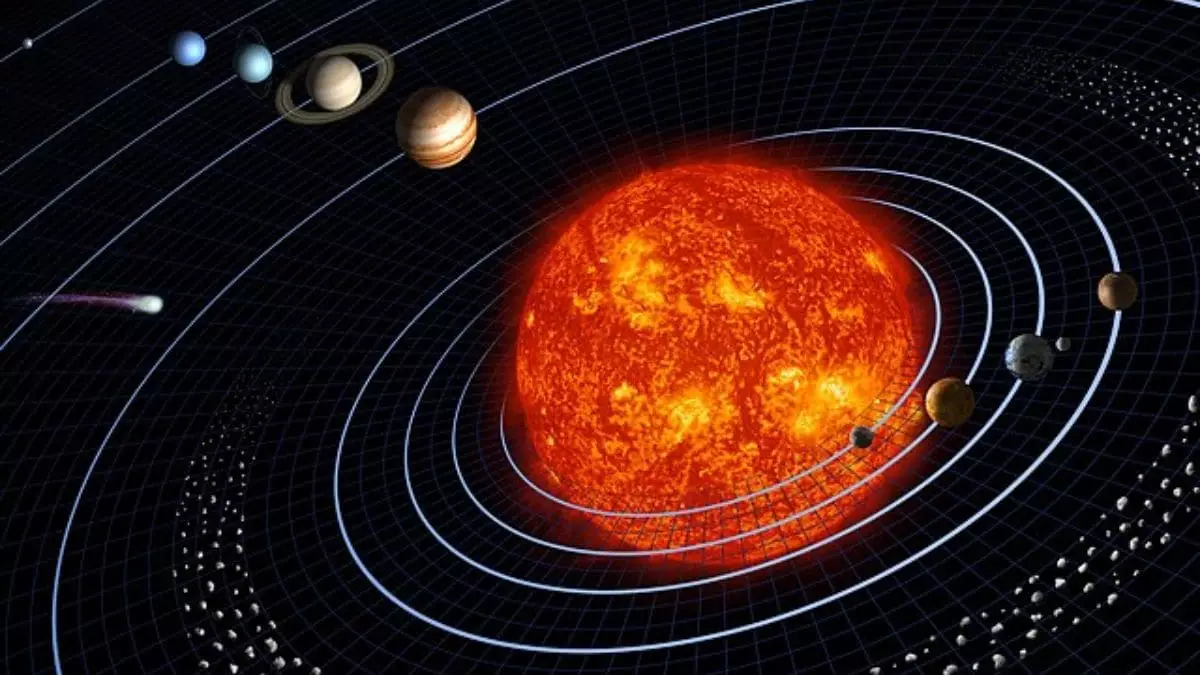The discovery of a modest 50-gram meteorite, Northwest Africa 12264, has sent shockwaves through the scientific community by forcing us to reconsider long-held beliefs about the chronology of our solar system’s formation. Traditionally, planets closer to the Sun—Earth and Mars—were believed to coalesce rapidly, while those farther out, such as Jupiter and beyond, formed over a longer period due to their water-rich and icy compositions. This simplistic tiered view, based on temperature gradients and chemical makeup, is now being seriously challenged by this tiny celestial relic.
What makes this meteorite so transformative? Its age, nearly 4.564 billion years, aligns it with planetary crusts from the inner solar system. Despite originating beyond the asteroid belt and bearing isotopic signatures that tie it to the outer regions, its age suggests a surprisingly synchronized birth for rocky bodies across disparate parts of the solar system. This finding disrupts traditional narratives that painted the outer planets’ formation as a slow, drawn-out process, delayed by the presence of water and ice that ostensibly hampered differentiation.
It’s a provocative revelation because it implies a rapid, perhaps even universal, process for planet formation—one that cannot be fully explained by the classical models based solely on temperature and composition. The meteorite’s chemical profile, taken from its chromium and oxygen isotopes, serves as hard evidence that the distinction between inner and outer planetary development may have been much less pronounced than previously believed. Instead of a gradual timeline where water-rich worlds lagged behind their terrestrial siblings, we may be looking at a scenario where the initial phases of planetary assembly unfolded in near synchrony across the solar system.
Implications Beyond Our Solar System
Adding a cosmological dimension, this meteorite’s story resonates with burgeoning observations of exoplanetary systems. Astronomers have increasingly observed disks of gas and dust around other stars, which suggest that planetesimal formation may happen swiftly and across large orbital distances. The consistency of these observations with the implications of the meteorite’s age hints at a universal mechanism—one that unites the formation histories of our solar system with the processes actively shaping other star systems in the galaxy.
By challenging the notion that water and ices inherently slowed planetary development, this discovery urges us to reconsider the models that have dominated planetary science. It suggests that the blueprint for terrestrial planet formation might be more streamlined and rapid than previously thought, a humbling reminder that our cosmic origins are still rife with mysteries.
Most critically, this meteorite underscores the importance of questioning accepted paradigms. Science is not static; it evolves with each discovery, no matter how trivial it might seem. Northwest Africa 12264 doesn’t just rewrite a timeline—it forces us to reevaluate our entire understanding of how, when, and where rocky worlds like Earth come to be.

Leave a Reply